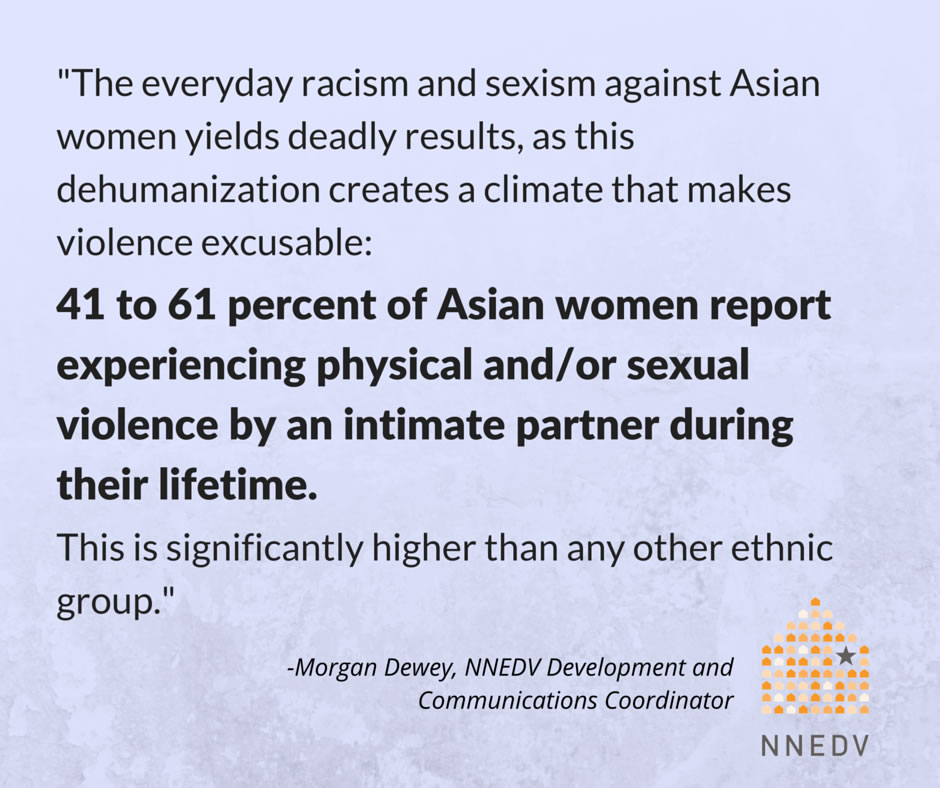Insurance Chatbots: CX Transformation

Chatbots can collect customer data and also suggest the right insurance plan. This helps customers understand what will be covered under the specified insurance plan in case of need or an accident. Chatbots can easily explain insurance and banking jargon by pulling out information from your knowledge to help your customers understand better. Sometimes it can be complex and confusing to track, book, reschedule, and cancel.
Everyone will have a different requirement which is why insurance extensively relies on customization. When a new customer signs a policy at a broker, that broker needs to ensure that the insurer immediately (or on the next day) starts the coverage. Failing to do this would lead to problems if the policyholder has an accident right after signing the policy. Let’s explore how these digital assistants are revolutionizing the insurance sector. Let’s explore the top use cases and examples of how chatbots are setting new standards. With Acquire, you can map out conversations by yourself or let artificial intelligence do it for you.
It can also inquire about what they are wanting to buy insurance for, the value of the goods they are wanting to insure, and basic health information. Insurify, an insurance comparison website, was among Chat GPT the first champions of using chatbots in the insurance industry. When in conversation with a chatbot, customers are required to provide some information in order to identify them and their intent.
An insurance chatbot offers considerable benefits to both a carrier and its customers by combining the flexibility of conversational AI and the scalability of automation. A chatbot is one of multiple channels a company can utilize when speaking with their customers in the manner and method they desire. Insurance customers are demanding more control and greater value, and insurers insurance chatbot use cases need to increase revenue and improve efficiency while keeping costs down. AI chatbots can respond to policyholders’ needs and, at the same time, deliver a wealth of significant business benefits. Being available 24/7 and across multiple channels, an automated tool will let policyholders file insurance claims or get urgent support and advice whenever and however they want.
- When humans and bots interact, the use of distinct languages, formal or informal, must be considered.
- In this demo, the customer responds to a promotional notification from the app which is upselling an additional policy type for said customer.
- Insurance chatbots can also provide all the supporting details a new customer needs to sign up and proceed with the client onboarding process or help existing policyholders upgrade their plans.
- Virtual assistants can help new customers get the most out of their insurance by providing guided onboarding and answering common questions.
This system can be integrated with healthcare providers’ calendars, showing real-time availability and sending automatic reminders as the appointment date approaches. Customer onboarding is critical in retail, especially when introducing customers to new services or loyalty programs. A chatbot could recommend books based on the genres the customer has previously explored or purchased. If the customer shows interest in historical fiction, the chatbot might suggest the latest bestsellers in that genre, books by similar authors, or even upcoming titles with special pre-order prices. This makes the shopping experience more personalized and helps the customer discover products they might not have found on their own.
This article is an essential read for insurance professionals seeking to leverage the latest digital tools to enhance customer engagement and operational efficiency. Chatbots use natural language processing to understand customer queries, even if they are phrased in a casual way. This results in a more satisfying and frictionless customer experience. Additionally, chatbots can be easily integrated with a company’s knowledge base, making it easy to provide customers with accurate information on products or services. Insurance chatbots use natural language processing (NLP) to understand user queries and machine learning to improve responses over time.
PolicyBazaar
By understanding customers’ individual needs, chatbots can suggest the most suitable insurance products, such as life insurance for young families or promoting travel insurance to frequent flyers. They can even recognize customer loyalty and apply discounts to purchases and renewals. One of the fine insurance chatbot examples comes from Oman Insurance Company which shows how to leverage the automation technology to drive sales without involving agents. Available over the web and WhatsApp, it helps customers buy insurance plans, make & track claims and renew insurance policies without human involvement.

Getting insurance might seem straightforward, but it’s really a journey with several steps, each with its own set of challenges. Clients are more likely to pay their bills on time if they communicate with a chatbot. Health insurance is the number one sector benefiting from this technology. Restaurants can enable their chatbot to collect delivery orders, show delivery status, and even give tracking information straight from its interface.
Use Case 1: Offer Policy Information & Answer FAQs
Having a chatbot with suitable options can make your offerings and processes simple to comprehend and follow. Not just for health insurance, adding a chatbot is beneficial to automobiles, property, business, cyber liability, travel, pet insurance, and the like. Having a chatbot on the site can help them collect all the leads without missing out. Chatbots can answer visitor queries about the offering and clarify details. Leads can be collected here, and they can then be pushed to the sales team. Also, chatbots can assist visitors even after operating hours while continuing to collect leads.
However, by focusing on improving customer conversion rates they saw the opportunity to maximize ROI on their spend. Before deploying a new chatbot, companies need to provide it with all the necessary data and feedback to improve its responses and ensure that it meets customer expectations. Whatever type of chatbot you decide to use (rule-based, conversational, etc.), customer service teams need to prepare the tool to match their needs. Chatbots are accessible around the clock, offering immediate support to customers without the delays of being on hold or restricted by business hours.
- It’s essential to use key performance indicators (KPIs) to determine how successful your chatbots have been in their role.
- By providing 24/7 customer service, chatbots can help insurance companies to meet the needs of today’s customers.
- In the insurance industry that’s especially important because carriers are under increased pressure to reduce expenses wherever possible in a volatile economic climate.
- Not only the chatbot answers FAQs but also handles policy changes without redirecting users to a different page.
- A virtual assistant answers prospects’ and customers’ questions, triggers troubleshooting scenarios, and collects data for human agents to resolve complex issues.
These bots can interact with guests before their arrival to set room preferences, such as temperature, lighting, and entertainment options. Imagine a chatbot interacting with users to understand their vacation preferences, such as beach resorts, adventure activities, or cultural tours. Based on these preferences, the chatbot can suggest a tailored travel itinerary, book flights and hotels, and even recommend local experiences.
Claims processing is one of insurance’s most complex and frustrating aspects. You can use artificial intelligence assistants, such as chatbots, to automate various service tasks. These ways range from handling insurance claims to accessing the user database.
Also, if you integrate your chatbot with your CRM system, it will have more data on your customers than any human agent would be able to find. It means a good AI chatbot can process conversations faster and better than human agents and deliver an excellent customer experience. The best virtual assistants go beyond a FAQ chatbot’s capabilities and offer advice.
Insurance 2030—The impact of AI on the future of insurance – McKinsey
Insurance 2030—The impact of AI on the future of insurance.
Posted: Fri, 12 Mar 2021 08:00:00 GMT [source]
Customers activate the bot from the AA quotation page, either on the web or mobile app. The bot responds and helps them navigate and interact with the form and buttons, so they can find the right cover at the right price. Through the bot interaction with Zendesk, the used live chat software, the discussion is effortlessly forwarded to a human agent whenever a customer requires more support.
The 3 pillars of a successful insurance chatbot
Multiple choice questions can be presented to website visitors to determine their needs and what kinds of products may benefit them. Personalised product offers can be presented using this information, and links to brochures or forms of content marketing, such as blog posts, can be shared. In addition, the chatbot has helped FWD Insurance save $1 million per year in client support costs. LLMs can have a significant impact on the future of work, according to an OpenAI paper. The paper categorizes tasks based on their exposure to automation through LLMs, ranging from no exposure (E0) to high exposure (E3).
The ability to communicate in multiple languages is another standout feature of modern insurance chatbots. This multilingual capability allows insurance companies to cater to a diverse customer base, breaking down language barriers and expanding their market reach. For example, AI chatbots powered by Yellow.ai can interact in over 135 languages and dialects via text and voice channels. It also eliminates the need for multilingual staff, further reducing operational costs.
Insurance chatbots provide an invaluable service with their uninterrupted availability, ensuring that customers have constant access to assistance and support. These intelligent systems manage many policy inquiries, adeptly handling questions about policy terms, expiration dates, coverage details, and upcoming premium obligations. Singaporean insurance company FWD Insurance has a chatbot called “FWD Bot”. It helps users find the right insurance product, make a claim, and understand their policy. You can use this feedback to improve the client experience and make changes to products and services.
That’s where the right ai-powered chatbot can instantly have a positive impact on the level of customer satisfaction that your insurance company delivers. While exact numbers vary, a growing number of insurance companies globally are adopting chatbots. The need for efficient customer service and operational agility drives this trend. Insurance chatbots – unlike human agents – can handle multiple queries simultaneously, eliminating wait times and ensuring customers receive prompt assistance. Chatbots are providing a new avenue of innovation for the insurance industry.
A chatbot can collect all the background information needed and escalate the issue to a human agent, who can then help to resolve the customer’s problem to their satisfaction. In the event of a more complex issue, an AI chatbot can gather pertinent information from the policyholder before handing the case over to a human agent. This will then help the agent to work faster and resolve the problem in a shorter time — without the customer having to repeat anything. Let’s take a look at 5 insurance chatbot use cases based on the key stages of a typical customer journey in the insurance industry. Acquire is a customer service platform that streamlines AI chatbots, live chat, and video calling.
And that’s what your typical insurance salesperson does for nurturing leads. Even if the policyholders don’t end up buying your product, it eases them to the idea through a two-way conversation between an agent and the prospect. Insurance and Finance Chatbots can considerably change the outlook of receiving and processing claims.
Additionally, it includes a no-code chatbot builder, FAQ modules for controlled responses, and capabilities for personalized customer interactions. ChatBot is a robust AI-driven chatbot platform designed to deliver instant customer support by providing accurate AI-generated answers. By scanning websites, help centers, and other resources, it automates interactions without the need for third-party providers like OpenAI or Google Bard. The platform boasts a no-code, customizable framework that makes it easy for businesses to implement AI without coding skills.
Improve customer service
That changes the industry by offering more personalization aligned with current customer needs – resulting in greater customer satisfaction and experiences. Rooms and airplane seats are remarkably similar, as with many insurance policies. There is little differentiation between coverage, pricing and policies. Customer service is now a core differentiator that providers need to leverage in order to build long-term relationships and deepend revenue. With the lifetime value of policyholders so high, and acquisition costs also sky-high, keeping current customers happy with stellar customer service is an easy way to reduce churn.
These chatbots can analyze photos of car accidents, home damage, or other insurance claim evidence. By comparing images against vast databases, they quickly assess the extent of the damage and facilitate speedy claim resolutions. Also, they keep potential and current customers hooked with interactive content, quizzes, and timely follow-ups, nudging them gently toward making a purchase. They gather valuable insights, helping the company fine-tune its marketing strategies and product offerings to suit customer needs better, leading to a more efficient sales cycle.
You can also provide options in the chatbot to let them return orders if they’re unsatisfied or even apply for a refund. Just like how important it is to have interactive and dynamic forms in the form of chatbots for your marketing, your sales department can use chatbots for receiving demo requests. https://chat.openai.com/ Chatbots can converse with the prospects and get to know their exact requirement so that your sales personnel can go to the meeting with more info to convert the prospect into a customer. In physical stores, you can have your personnel direct visitors where they want to go and make the purchase.
A healthcare provider might use a chatbot to handle appointment bookings. Patients can choose their preferred date and time and receive confirmation instantly. This reduces administrative workload and improves patient satisfaction by making healthcare more accessible. Chatbots simplify the process of scheduling healthcare appointments by allowing patients to book, reschedule, or cancel appointments autonomously through a conversational interface.
With an advanced bot, it’s virtually effortless to identify customers who file bogus documents and make false claims to squeeze money out of the insurer. Your insurance company can trust the bot to flag potential fraud by asking customers for additional proof of documentation. The major asset of machine learning solutions is their ability to become more sophisticated after processing new data sets. Such capabilities make chatbot-customer interaction very close to human-to-human communication.
More adaptive than rule-based chatbots, AI chatbots can better replicate the experience of speaking with a human agent. This can help to provide a better customer service experience for users, as the chances of misunderstanding the query or returning irrelevant responses are reduced. They’re computer programs that can interact with and respond to people, holding real-time conversations. Using chatbots alongside human agents can help to streamline workflows, increase productivity, and provide better customer service.
Companies can keep these new customers by enhancing their digital experiences and investing in chatbots. Additionally, they can focus on placing customer trust at the center of everything they do. Imagine a situation where your chatbot lets customers skip policy details. Instead, it offers them the option to explore specific details if they desire. This method helps customers get the information they need and focus on what’s important. Employing chatbots for insurance can revolutionize operations within the industry.
Lemonade’s chatbot has significantly reduced the time it takes for customers to get insured and receive claim payouts. The retail insurance companies have low revenue per customer and the majority of them have an email or IVR based phone network for customer service. Thus, providing a personalized experience instantly becomes a struggle leading to high dissatisfaction. You can use them to answer customer questions, process claims, and generate quotes. Smart Sure provides flexible insurance protection for all home appliances and wanted to scale its website engagement and increase its leads.
Find out how Infobip helped Covéa Group reach an 11% conversion rate on a conversational marketing campaign with RCS. There is no question that the use of Chatbots is only going to increase. As a software developer, I have been voice crying in the wilderness, trying to make requirements clear, use every minute to deliver the result, and not reinvent the wheel. Users can change franchises, update addresses, and request ID cards through the chat interface.
Chatbots can help customers calculate mortgages for the property they’re interested in. Also, they can be used to show market trends, interest rate info, and other related announcements. After completing OTP verification for security compliances, chatbots can be configured to show a patient’s medical history, recent interaction with doctors, and prescriptions.
Our platform
If you do your homework ahead of time and test out a few options, you should experience a blend of these benefits. The goal is to find the best combination that streamlines your operations and gives you the most satisfaction for generating leads and keeping clients happy. You’ll find AI being leveraged in the insurance industry by streamlining mundane and repetitive tasks. Instead of wasting hours running numbers or developing new marketing materials, AI provides a real-time solution so you can focus on developing your insurance network of leads.
This is a program specifically designed to help businesses train their employees in how to use chatbots successfully. Chatbots can help insurers save on customer service costs as they require less manpower to operate. Service performance is positively correlated with sticking to or letting go of the provided services[2]. As a result, it becomes essential to use chatbots to upgrade your game. Changing the address on a policy or adding a new car to it takes just a few minutes when a chatbot process the information.
By automating up to 80% of routine queries, these chatbots exponentially scale your support capacity without the need for extra resources. Witness productivity and efficiency soar as your customer service representatives are freed to focus on intricate, complex issues that demand their expertise. Experience the future of customer support, where AI-powered assistance elevates your service to unparalleled levels. The problem is that many insurers are unaware of the potential of insurance chatbots. By automating routine tasks, chatbots reduce the need for extensive human intervention, thereby cutting operating costs. They collect valuable data during interactions, aiding in the development of customer-centric products and services.

Introducing Intelligent Virtual Assistants (IVAs) infused with the brilliance of GPT technology. You can foun additiona information about ai customer service and artificial intelligence and NLP. These remarkable insurance chatbots effortlessly bridge the gap between customers and insurers, elevating their experience to new heights. Most of the communication of new policies between the broker and the insurance company takes place via structured data (e.g. XML) interchanges.
According to a 2021 report, 50% of customers rank digital communications as a high priority (but only 17% of insurers use them). But the marketing capabilities of insurance chatbots aren’t limited to new customer acquisition. Forty-four percent of customers are happy to use chatbots to make insurance claims. Chatbots make it easier to report incidents and keep track of the claim settlement status. In combination with powerful insurance technology, AI chatbots facilitate underwriting, customer support, fraud detection, and various other insurance operations. Implementing a chatbot revolutionized our customer service channels and our service to Indiana business owners.
Your prospects will have a ton of questions when they look around and peruse your content. Even though most answers are probably available on your site, they might not want to spend time searching for them. Chatbots can pull answers to queries from your knowledge base and share them with your prospects in a wink. In accordance with Avenga.com, as evident from the trends, the use of conversational AI in the insurance sector is only going to increase. From providing guidance and answering common questions to automatically initiating a claim filing, chatbots can do all that and more.
You can always trust the bot insurance analytics to measure the accuracy of responses and revise your strategy. The use of an Insurance chatbot can help brands acquire, engage, and serve their customers. By deploying an insurance bot, it becomes easy to cater to the needs of customers at every stage of their journey. Companies that use a feature-rich chatbot for insurance can provide instant replies on a 24×7 basis and add huge value to their customer engagement efforts.
Insurers must predict what could go wrong, from minor accidents to big disasters. From choosing a policy to handling a claim, it’s not always smooth sailing. Let’s go through these steps together and see what challenges come across.
They also automatically store this data in the company’s data sheet for better reference. This helps not only generate leads but also sort them out on the basis of a customer’s intent. AI Chatbots are always collecting more data to improve their output, making them the best conduit for generating leads.
In sales and marketing, chatbots are proving to be powerful tools for engaging customers, generating leads, and boosting sales. Chatbots are revolutionizing the way companies onboard and train new employees. These bots can provide engaging interactive, on-demand training sessions that can be accessed at the convenience of the new hire. They can also answer any questions a new employee might have about company policies, procedures, or job-specific tasks.
Unlike human agents, chatbots can deal with thousands of queries at once, helping to quickly work through the backlog of customer service requests, increasing productivity and reducing costs. They can answer frequently asked questions about multiple topics, from payment and postage queries to technical queries regarding specific products. Suppose customers of a particular product or service often contact customer services with questions about a specific pain point. In that case, a chatbot can be programmed to solve that problem quickly and easily. GEICO offers a chatbot named Kate, which they assert can help customers receive precise answers to their insurance inquiries through the use of natural language processing.
For example, a chatbot could answer questions about postage costs or discount codes. They can be used to investigate customer queries about their plans’ technical aspects, such as signal loss issues. For example, if many customers in one area complained about a lack of reception, you could investigate if there’s an issue with a mast or other technology in that area. Grab the Contact Centre Playbook, which breaks down everything you need to know, from setup to improving customer satisfaction—with examples from real contact centre teams across different industries.
You need to stand out among the crowd and ensure the customer’s experience generates positive word-of-mouth marketing and higher retention rates. You can start using ChatBot in your insurance agency with a free 14-day trial. That will allow you to build a simple version of your desired outcome to test how it works with your agency’s team, stakeholders, and current clients.

The five use cases detailed above represent just a handful of potential applications for chatbots in the insurance industry. Adopting AI and the use of chatbots specifically all aims to improve the customer experience, which is crucial to the success of insurers and agents alike. FAQ chatbots can be used to fetch responses from a list of predetermined answers in response to specific keywords. By using FAQ chatbots to answer the most common queries you receive, you can save time for your human agents while still providing adequate responses for your customers.
But they only do that after they’ve gauged the spending capacity and the requirements of the customer instead of blindly selling them other products. Providing answers to policyholders is a leading insurance chatbot use case. Bots can be fed with the information on companies’ insurance policies as common issues and integrate the same with an insurance knowledge base. An AI Assistant can serve as a virtual insurance advisor for customers.











(mh=Zm_VrCmRedBVgT2i)3.jpg)